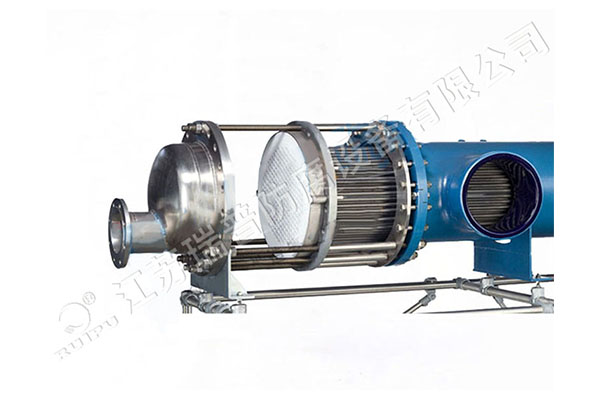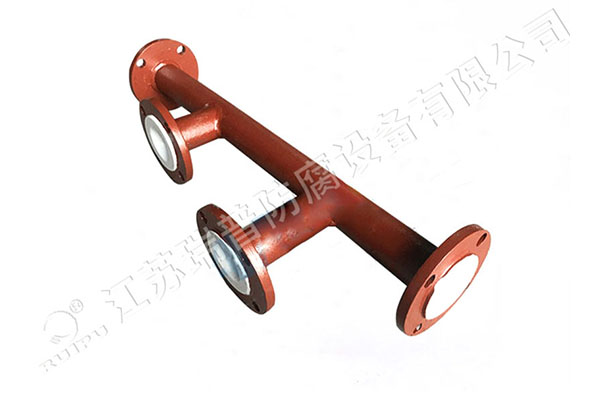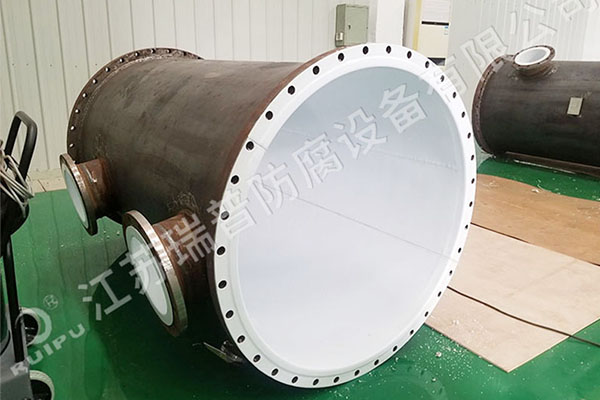How does the heat exchanger achieve stability at 1300℃?
Release Time : 2025-07-28
In the deep veins of modern industrial and energy systems, heat exchangers are quietly promoting heat transfer and energy conversion in an efficient and tenacious manner. It is not as loud as a boiler, nor as large and conspicuous as a cooling tower, but it is an indispensable "temperature regulator" in many industries such as chemical, electric power, metallurgy, and refrigeration. It tells the story of heat transfer with precise structures, interprets the wisdom of industry with excellent materials, and silently injects a high efficiency and stability into every energy flow.
The reason why heat exchangers are different is that they use high thermal conductivity materials. Its thermal conductivity far exceeds that of other corrosion-resistant materials, which means that the required heat transfer area is smaller under the premise of achieving the same heat transfer efficiency, allowing the equipment to be designed more compactly. This ability to "win more with less" not only greatly reduces the footprint of the equipment, but also significantly reduces the installation and use costs. In the modern industrial environment where space is limited and efficiency is paramount, this miniaturized and efficient design concept is undoubtedly a quiet revolution.
Interestingly, the heat exchanger not only "transfers heat quickly", but also "lasts long". It has excellent corrosion resistance and can resist erosion in a variety of extreme chemical environments such as high concentrations of sulfuric acid, nitric acid, phosphoric acid, mixed acid, strong alkali, oxidants, etc. What's more amazing is that it is the only ceramic material that can withstand corrosion from hydrofluoric acid. This feature makes it an irreplaceable key component in fields such as semiconductors, photovoltaics, and fine chemicals that require extremely high material purity and corrosion resistance. This "invulnerable" ability gives it an extremely long service life and reduces the downtime and maintenance costs caused by frequent replacement.
In terms of thermal and mechanical properties, the heat exchanger also performs well. It has high strength and high hardness, can operate stably under extremely high temperatures and pressures, and can be used normally even in a high temperature environment of 1300℃. At the same time, it also has excellent thermal shock resistance and can withstand drastic temperature changes without breaking, ensuring that it is still safe and reliable in systems with frequent start-stop or fluctuating operating conditions. In addition, its smooth surface and dense structure allow the medium to pass through at high speed, reducing flow resistance and improving overall heat exchange efficiency.
More importantly, the design of the heat exchanger not only focuses on performance, but also takes into account industrial aesthetics. It has a compact structure and smooth lines. Whether it is a shell and tube, plate or ceramic heat exchanger, it shows a sense of order and power of precision machinery. Between high-temperature pipes and complex equipment, it is like a silent guardian, silently bearing the test of extreme environments, and accurately transferring heat from one place to another.
It can be said that the heat exchanger is not just a device in the industrial system, it is the core hub of energy conversion and the crystallization of material science and engineering design. It tells the story of efficiency with high thermal conductivity materials, interprets the art of tenacity with corrosion-resistant structures, and silently injects a high efficiency, safety and lasting power into every industrial operation.
The reason why heat exchangers are different is that they use high thermal conductivity materials. Its thermal conductivity far exceeds that of other corrosion-resistant materials, which means that the required heat transfer area is smaller under the premise of achieving the same heat transfer efficiency, allowing the equipment to be designed more compactly. This ability to "win more with less" not only greatly reduces the footprint of the equipment, but also significantly reduces the installation and use costs. In the modern industrial environment where space is limited and efficiency is paramount, this miniaturized and efficient design concept is undoubtedly a quiet revolution.
Interestingly, the heat exchanger not only "transfers heat quickly", but also "lasts long". It has excellent corrosion resistance and can resist erosion in a variety of extreme chemical environments such as high concentrations of sulfuric acid, nitric acid, phosphoric acid, mixed acid, strong alkali, oxidants, etc. What's more amazing is that it is the only ceramic material that can withstand corrosion from hydrofluoric acid. This feature makes it an irreplaceable key component in fields such as semiconductors, photovoltaics, and fine chemicals that require extremely high material purity and corrosion resistance. This "invulnerable" ability gives it an extremely long service life and reduces the downtime and maintenance costs caused by frequent replacement.
In terms of thermal and mechanical properties, the heat exchanger also performs well. It has high strength and high hardness, can operate stably under extremely high temperatures and pressures, and can be used normally even in a high temperature environment of 1300℃. At the same time, it also has excellent thermal shock resistance and can withstand drastic temperature changes without breaking, ensuring that it is still safe and reliable in systems with frequent start-stop or fluctuating operating conditions. In addition, its smooth surface and dense structure allow the medium to pass through at high speed, reducing flow resistance and improving overall heat exchange efficiency.
More importantly, the design of the heat exchanger not only focuses on performance, but also takes into account industrial aesthetics. It has a compact structure and smooth lines. Whether it is a shell and tube, plate or ceramic heat exchanger, it shows a sense of order and power of precision machinery. Between high-temperature pipes and complex equipment, it is like a silent guardian, silently bearing the test of extreme environments, and accurately transferring heat from one place to another.
It can be said that the heat exchanger is not just a device in the industrial system, it is the core hub of energy conversion and the crystallization of material science and engineering design. It tells the story of efficiency with high thermal conductivity materials, interprets the art of tenacity with corrosion-resistant structures, and silently injects a high efficiency, safety and lasting power into every industrial operation.







